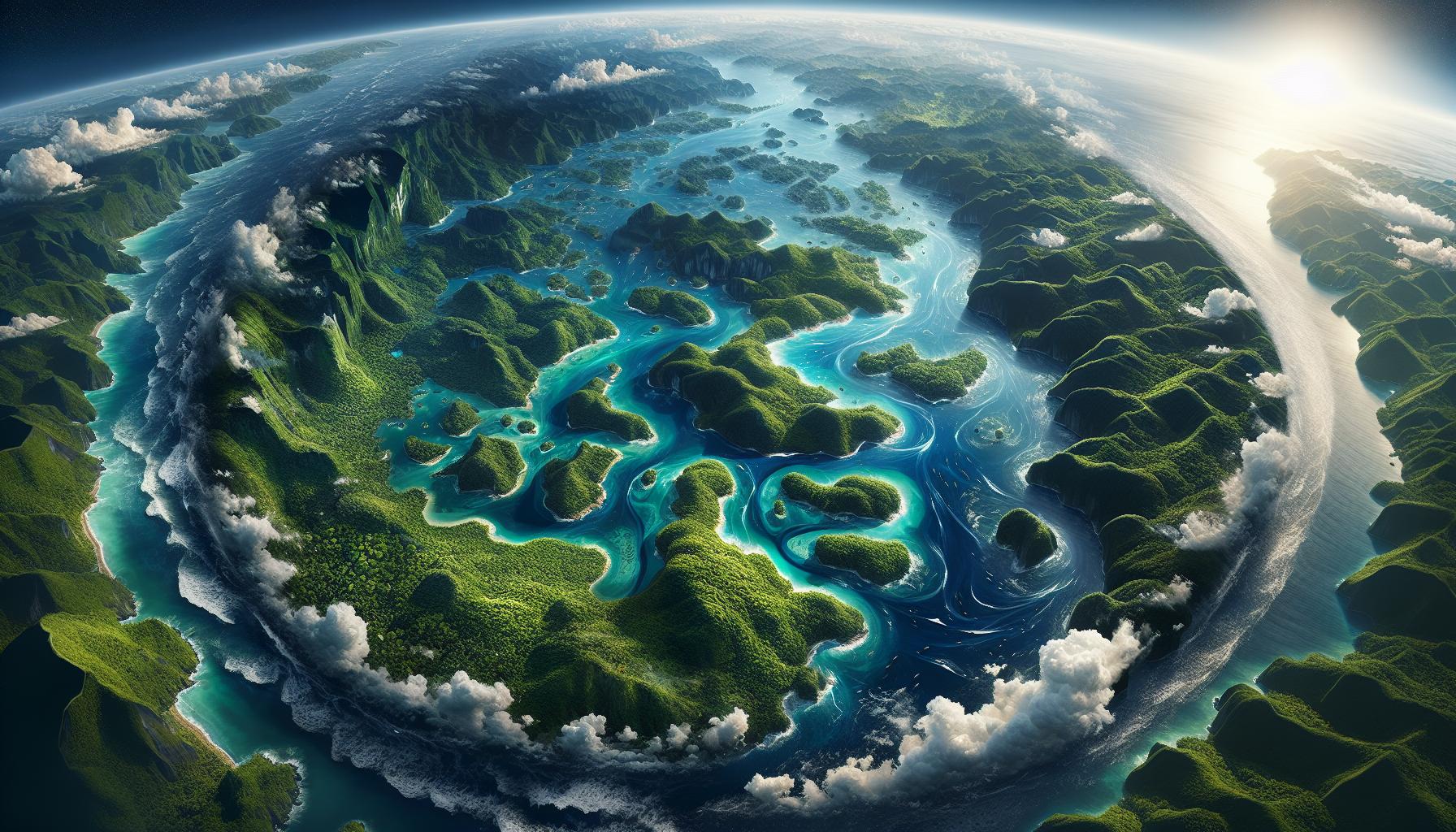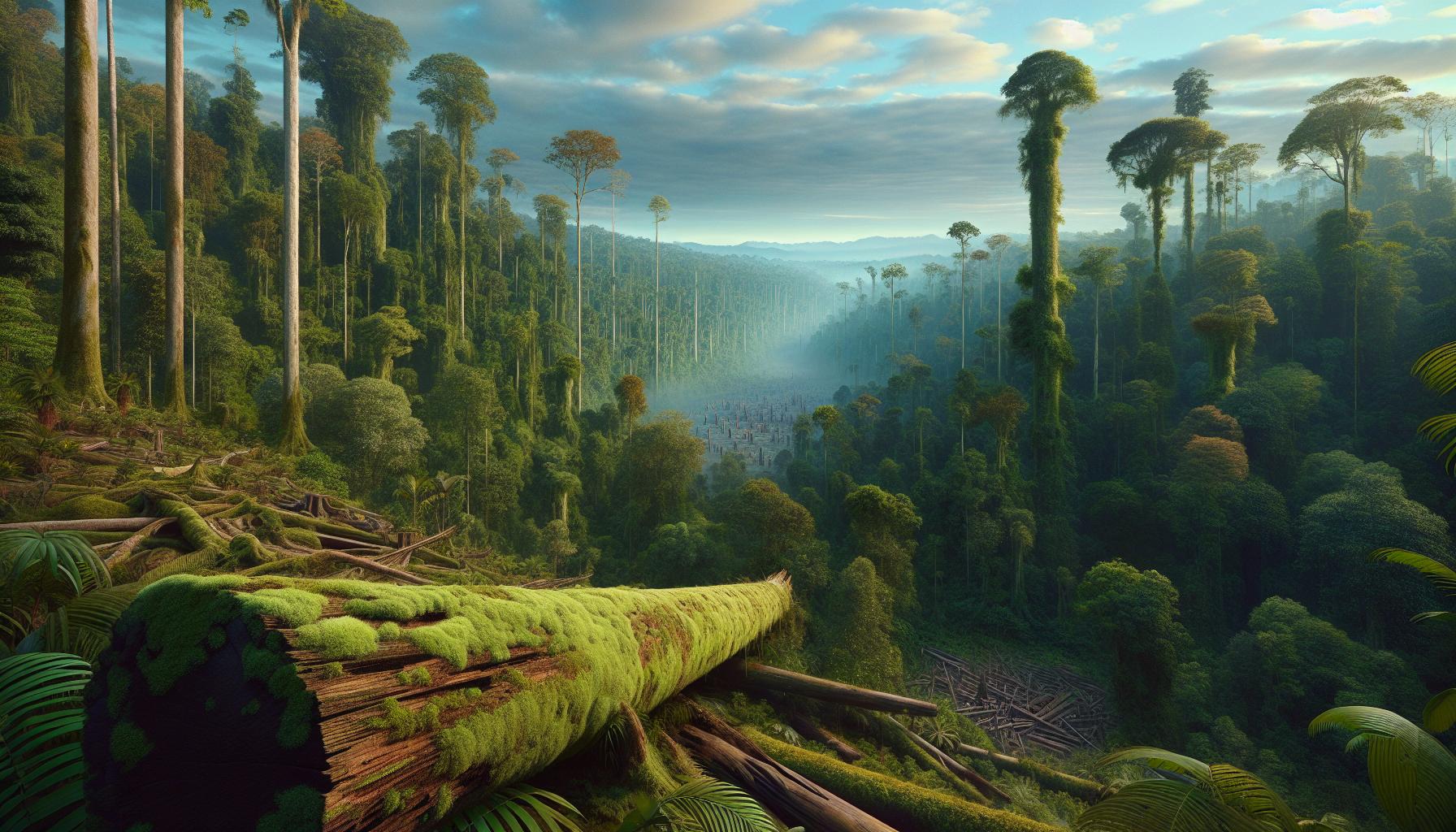The carbon cycle stands as nature’s most remarkable recycling system, orchestrating the continuous movement of carbon atoms through Earth’s living and non-living components. From the air we breathe to the food we eat, this fundamental process shapes life as we know it on our planet.
Like a well-choreographed dance, carbon molecules travel through the atmosphere, biosphere, hydrosphere, and lithosphere in an endless loop. Plants transform carbon dioxide into energy through photosynthesis, while animals and humans release it back through respiration. Even the deepest ocean trenches and highest mountain peaks play their part in this intricate planetary performance.
Facil:r8onrgavryy= Ciclo Del Carbono
The carbon cycle represents Earth’s continuous exchange of carbon atoms between living organisms atmospheric gases oceanic waters. This biogeochemical process maintains the planet’s carbon balance through a series of interconnected pathways.
Key Components of the Carbon Cycle
Four primary processes drive carbon movement through Earth’s systems: photosynthesis absorption respiration decomposition. Plants capture atmospheric carbon dioxide during photosynthesis converting it into glucose sugar molecules. Marine phytoplankton perform similar functions in oceans absorbing dissolved CO2. Animals obtain carbon by consuming plants or other organisms releasing it back through cellular respiration. Decomposers break down dead organic matter returning stored carbon to the soil atmosphere.
Carbon Reservoirs in Nature
Earth’s carbon storage exists in five major reservoirs measured in gigatons:
| Reservoir | Carbon Content (Gt) |
|---|---|
| Oceans | 38,000 |
| Fossil Fuels | 4,130 |
| Soil | 2,500 |
| Atmosphere | 760 |
| Living Biomass | 560 |
The oceans contain the largest carbon pool storing carbon as dissolved inorganic compounds carbonate sediments. Soil organic matter holds significant carbon amounts in forms ranging from fresh plant residues to stable humus. Fossil fuel deposits represent ancient organic material transformed under pressure heat over millions of years.
Carbon Exchange Between Earth’s Spheres

Carbon atoms move continuously between Earth’s major spheres through various chemical biological physical processes. This dynamic exchange maintains the planet’s carbon balance essential for life.
Atmospheric Carbon Movement
The atmosphere exchanges carbon with terrestrial ecosystems through photosynthesis respiration. Plants absorb approximately 120 gigatons of carbon dioxide annually during photosynthesis while releasing oxygen. Terrestrial organisms return carbon to the atmosphere through cellular respiration cellular decay. Natural processes including volcanic eruptions forest fires release additional carbon into the atmosphere. Soil microorganisms break down organic matter contributing 55 gigatons of carbon dioxide yearly to atmospheric carbon levels.
Oceanic Carbon Exchange
The oceans store 50 times more carbon than the atmosphere through complex chemical biological interactions. Surface waters absorb 92 gigatons of atmospheric carbon dioxide annually through direct gas exchange. Marine organisms like phytoplankton convert dissolved carbon dioxide into organic compounds through photosynthesis. Deep ocean currents transport carbon-rich waters globally redistributing dissolved carbon compounds. Calcium carbonate formation by marine organisms stores carbon in seafloor sediments over geological timescales. The ocean’s biological pump transfers 10 gigatons of organic carbon annually from surface waters to deep ocean reservoirs.
| Carbon Exchange Process | Annual Amount (Gigatons) |
|---|---|
| Plant CO2 Absorption | 120 |
| Soil Microbial Release | 55 |
| Ocean CO2 Absorption | 92 |
| Ocean Biological Pump | 10 |
Role of Living Organisms

Living organisms serve as active participants in the carbon cycle through three primary biological processes: photosynthesis, respiration, and decomposition. These processes facilitate the continuous movement of carbon atoms between organisms and their environment.
Photosynthesis and Respiration
Plants, algae, and photosynthetic bacteria capture atmospheric carbon dioxide through photosynthesis, converting it into glucose and other organic compounds. This process absorbs 120 gigatons of carbon dioxide annually, storing it in plant tissues and releasing oxygen as a byproduct. Animals obtain carbon by consuming plants or other organisms, breaking down these organic compounds through cellular respiration to release energy. Marine phytoplankton perform 40% of Earth’s photosynthesis, making them crucial contributors to global carbon cycling. The combination of photosynthesis and respiration creates a balanced exchange of carbon between producers and consumers in ecosystems.
Decomposition Processes
Decomposers break down dead organic matter, releasing stored carbon back into the environment. Bacteria and fungi secrete enzymes that digest complex organic molecules into simpler compounds. Soil microorganisms contribute 55 gigatons of carbon dioxide to the atmosphere annually through decomposition activities. The process transforms deceased plant and animal material into humus, enriching soil with stable carbon compounds. Marine decomposers break down organic matter in oceans, converting it into dissolved organic carbon and carbonate ions. This biological degradation completes the carbon cycle by returning organic carbon to its inorganic form.
Human Impact on the Carbon Cycle

Human activities disrupt the natural carbon cycle through increased greenhouse gas emissions, deforestation, and industrial processes. These anthropogenic changes alter the balance of carbon exchange between Earth’s reservoirs.
Industrial Activities and Emissions
Industrial processes release 35 billion metric tons of carbon dioxide into the atmosphere annually through fossil fuel combustion. Power plants generate 40% of global carbon emissions by burning coal, oil and natural gas for electricity production. Manufacturing facilities contribute an additional 21% through industrial processes like cement production, steel manufacturing and chemical synthesis. Transportation accounts for 24% of emissions through vehicle exhaust, aircraft operations and maritime shipping. Agricultural practices add 10% more through livestock methane emissions and soil disturbance from farming activities.
| Emission Source | Percentage of Global Emissions |
|---|---|
| Power Plants | 40% |
| Manufacturing | 21% |
| Transportation | 24% |
| Agriculture | 10% |
| Other | 5% |
Deforestation Effects
Tropical deforestation releases 2.6 billion metric tons of stored carbon into the atmosphere each year. Logging operations remove 13 million hectares of forest annually, eliminating crucial carbon sinks that absorb atmospheric CO2. Forest clearing for agriculture converts carbon-rich ecosystems into cropland, releasing stored carbon from both vegetation and soil. Burning forests for land conversion produces immediate carbon emissions while reducing Earth’s capacity to sequester carbon. The Amazon rainforest has lost 17% of its total area in the past 50 years, diminishing its role as a major carbon reservoir.
| Deforestation Impact | Annual Value |
|---|---|
| Carbon Released | 2.6 billion tons |
| Forest Area Lost | 13 million hectares |
| Amazon Loss | 17% in 50 years |
Climate Change Connection
The carbon cycle’s disruption directly influences global climate patterns through increased atmospheric carbon dioxide levels. This disruption creates a cascade of environmental effects that amplify climate change impacts.
Carbon Cycle Disruption
Human activities alter the natural carbon cycle by accelerating carbon dioxide emissions beyond Earth’s absorption capacity. Industrial processes release 35 billion metric tons of carbon dioxide annually into the atmosphere, overwhelming natural carbon sinks. Deforestation compounds this problem by eliminating 2.6 billion metric tons of stored carbon each year while reducing the planet’s ability to absorb excess carbon dioxide. Rising ocean temperatures decrease marine ecosystems’ carbon absorption efficiency, leading to increased atmospheric carbon retention. Polar ice melt releases ancient trapped carbon deposits, creating a positive feedback loop that intensifies warming effects. Soil degradation from intensive agriculture releases stored carbon while limiting future sequestration potential. These combined disruptions create an imbalance where carbon emission rates exceed natural absorption processes by 4 billion metric tons annually.
| Carbon Cycle Disruption Factors | Annual Impact (Metric Tons) |
|---|---|
| Industrial Emissions | 35 billion |
| Deforestation | 2.6 billion |
| Natural Absorption Deficit | 4 billion |
Solutions for Carbon Balance
Carbon balance restoration requires strategic interventions across multiple ecosystems. Effective solutions combine natural processes with technological innovations to reduce atmospheric carbon dioxide levels.
Conservation Strategies
Protected areas preserve crucial carbon sinks, storing 15% more carbon than unprotected regions. Strategic conservation initiatives include:
- Establishing marine protected areas covering 30% of ocean ecosystems by 2030
- Implementing sustainable forest management practices in 85% of remaining primary forests
- Creating buffer zones around critical wetlands that store 25% of Earth’s soil carbon
- Restoring degraded grasslands through native species reintroduction
- Supporting indigenous land management practices that maintain carbon-rich ecosystems
Conservation efforts focus on protecting:
| Ecosystem Type | Carbon Storage Capacity (Gt) | Current Protection Status |
|---|---|---|
| Tropical Forests | 250 | 23% Protected |
| Peatlands | 550 | 15% Protected |
| Mangroves | 6.4 | 42% Protected |
| Seagrass Meadows | 19.9 | 18% Protected |
These strategies enhance natural carbon sequestration by preserving existing carbon stocks while promoting ecosystem resilience. Conservation areas serve as living laboratories for understanding carbon cycle dynamics while protecting biodiversity hotspots.
The carbon cycle stands as one of Earth’s most crucial natural processes keeping our planet habitable. Understanding this complex system reveals the delicate balance between various ecosystems and their role in maintaining Earth’s carbon equilibrium.
Human activities have significantly disrupted this natural balance through increased emissions and deforestation. Yet there’s hope through conservation efforts strategic interventions and technological innovations that can help restore the carbon cycle’s stability.
The future of our planet depends on implementing effective solutions that combine natural processes with human innovation. By protecting carbon sinks and reducing emissions we can work toward restoring the delicate balance of Earth’s carbon cycle for future generations.

